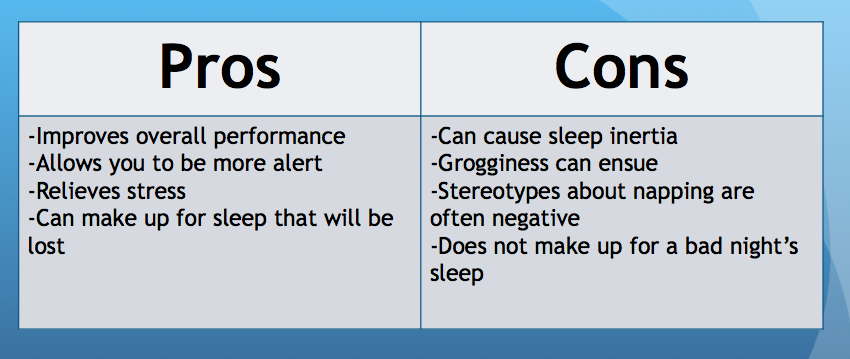Napping: Good or Bad?
Short afternoon naps are proven to improve overall life. Photo by Pavel Ševela [CC BY-SA 3.0 (http://creativecommons.org/licenses/by-sa/3.0)], via Wikimedia Commons.
March 20, 2015
Despite the harsh stereotype of laziness that is associated with naps, students may benefit from catching some “zzzs” to improve their lives.
Why Nap? Why Not?
According to Mayo Clinic, naps have several benefits. First, if you know that you are going to miss out on sleep in the future, a nap can keep you alert for more time than usual. Also, scheduling daily naps into your schedule can make you a more relaxed person. Lastly, people who struggle with being alert should take naps to improve their overall performance. Among famous people who napped were Albert Einstein, John F. Kennedy, Napoleon, and Ronald Reagan.
However, naps are not always a good thing. The National Sleep Foundation blames some cases of sleep inertia and severe disorientation on naps. The idea of waking up from a nap and “not knowing what year it is” is extreme, but long naps can cause confusion for the napper. Also, remember: a nap does not replace a full night’s sleep.
How Should You Nap?
There are three types of distinctive naps that are effective for different people. Planned naps take place because someone consciously decided to nap, and often, people use this type to make up for sleep lost in the future. Emergency naps are not a choice, per say, and these occur because one is too tired to continue functioning. Finally, habitual naps are planted into one’s schedule and usually happen daily.
Naps should take place in the afternoon because most people are not tired enough in the morning to get more sleep, and night-naps will impede a good night’s sleep. In addition, naps should not last more than 20 to 30 minutes or grogginess will ensue. As could be expected, one should find a quiet and comfortable place to nap, considering distractions may make it difficult to go to sleep.
Where In the World Do People Nap?
Even though naps are usually reserved for children and sick people in American culture, some other cultures leave an entire time slot in the day for naps.
In Spain and other states, there is a time of day called a “siesta” in which people leave work or school to go home for lunch and an afternoon nap. Often times, entire towns shut down for the time period before reopening for the remainder of the day.
Due to obvious health and mood benefits, busy and stressed students could benefit from habitually taking half an hour out of their day to refresh.



![Short afternoon naps are proven to improve overall life. Photo by Pavel Ševela [CC BY-SA 3.0 (http://creativecommons.org/licenses/by-sa/3.0)], via Wikimedia Commons.](https://shscourier.com/wp-content/uploads/2015/03/800px-Blue_alarm_clock_1.jpg)


